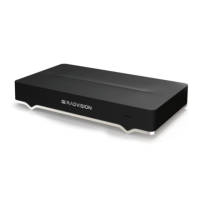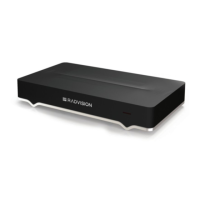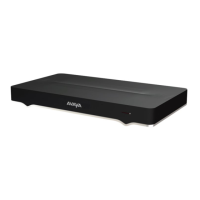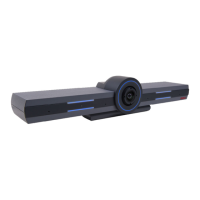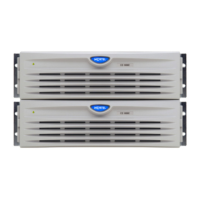Figure 17: Placing the Microphone Pods
Position the Microphone Pod as far as possible from loudspeakers and other noise sources.
Do not place paper or other objects in front of the Microphone Pod.
For large conference rooms, you can deploy two Microphone Pods, distributed evenly on the
table. When using the Avaya Pod to receive stereo, the cascading feature is disabled but you
can still use the second pod to mute/unmute the XT Series. In very large rooms, consider an
audio mixer to add as many microphones as needed. For more information, see Choosing a
Microphone for Your XT Series on page 61.
• Position of the XT Codec Unit
Place the XT Codec Unit on a horizontal surface which stands firmly on its base. The surface
must be dry and free of dust, oil and other residues.
Position the XT Codec Unit and the camera so that their front panel infra-red (IR) sensors are
visible by someone holding the XT Remote Control Unit. If the XT Codec Unit is in a cabinet,
the XT Remote Control Unit sends to the main camera's sensor which relays to the XT Codec
Unit.
Ensure the infra-red sensors do not face sunlight or inverter fluorescent lamps.
Place the XT Codec Unit anywhere within a five meters reach of the camera cables.
Leave enough space around the XT Codec Unit for air circulation and for connecting cables
easily.
• Configuring the monitors
Setting Up the XT Series Hardware
January 2017 Avaya Scopia
®
XT Series Deployment Guide 46
Comments on this document? infodev@avaya.com

